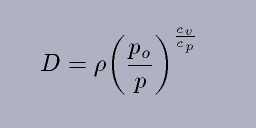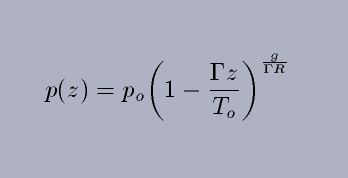Physics 410/510 First Homework Assignment
Due in Wednesday Oct 14
When working out the numerical problems, make sure you use a
consistent set of units.
1.
a) Using the hydrostatic equation or by another means show that
the mass of a vertical column of air of unit cross section that extends
from the surface to the "top" of the atmosphere is
po/g.
b) The surface pressure po is 1000
millibars where 1 millibar is 100 Pascals and a Pascal is a Newton per
square meter. The radius of the earth is 6300 kilometers. From this
calculate the total mass of the atmosphere.
c) If the temperature of the atmosphere is uniform at 300 K, calculate
its total enthalpy which may be taken as a measure of its total heat
content.
d) By some method, estimate the mass of the world's oceans and make sure you show your technique.
e) Assuming the temperature of the oceans is uniform at 275K, calculate
its total enthalpy and compare that with the previous calculation.
What does this comparison tell you?
2. a) From the hydrostatic equilibrium equation, derive and show the functional form of the change of pressure vs height.
b) From that expression and assuming
an isothermal temperature for the atmosphere of 240K and
a surface pressure of 1000 millibars, estimate the levels of the
atmosphere where the pressure is 100, 10 and 1 millibar.
3. Calculate the period of oscillation of an air parcel given that
dT/dz = -6.5 K/Km and T = 270K. (your answer should be around
10 minutes).
4. The potential density can be expressed as:

where cp and cv are specific heats of air at constant
pressure and constant volume. Calculate the potential density of air
at a pressure of 600 millibars and temperature = 258 K (typical conditions
at an altitude of about 15,000 feet).
Additional Problem for the Grad Studetns
5. Show that if there is a uniform lapse rate throughout the
entire atmosphere
(Γz = -dT/dz ) then the pressure in the
atmosphere is given by:

Calculate the height at which the pressure is 10% of the surface
pressure in the case where there is a uniform lapse rate of 10 K/Km
and compare that to the case where the atmosphere has a uniform temperature of
300K. Note that Γ is the dry adiabatic lapse rate
|